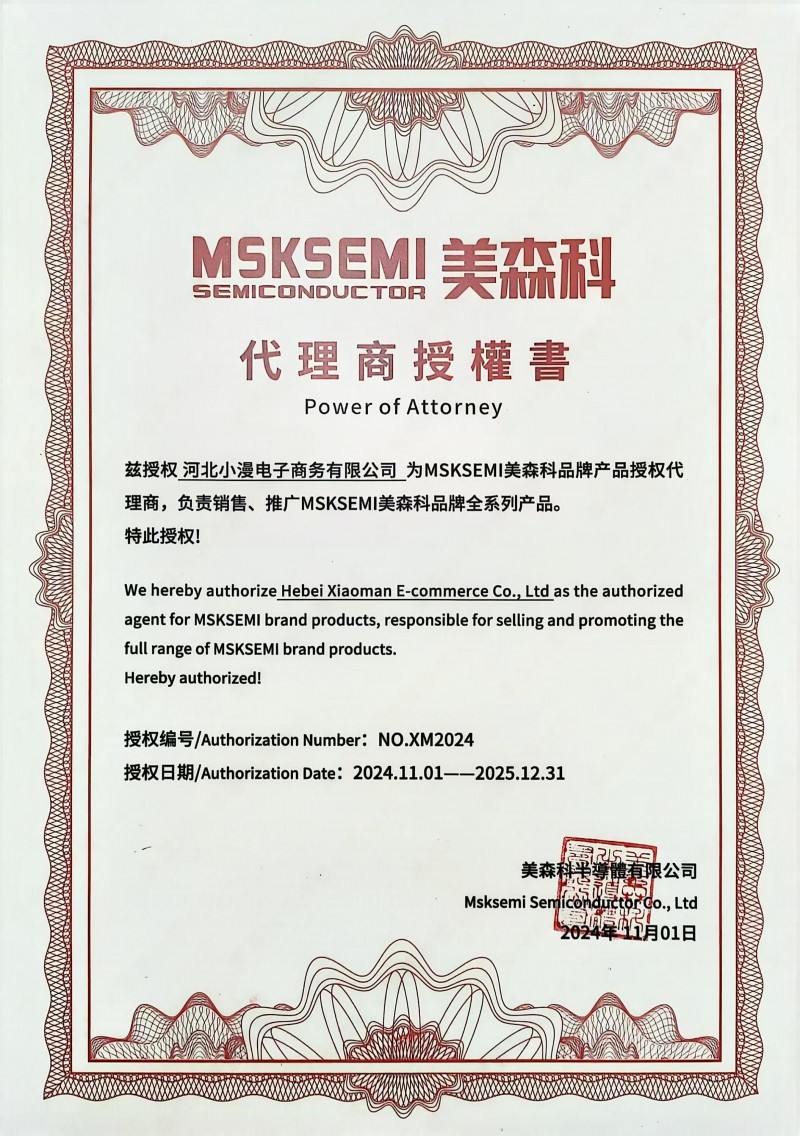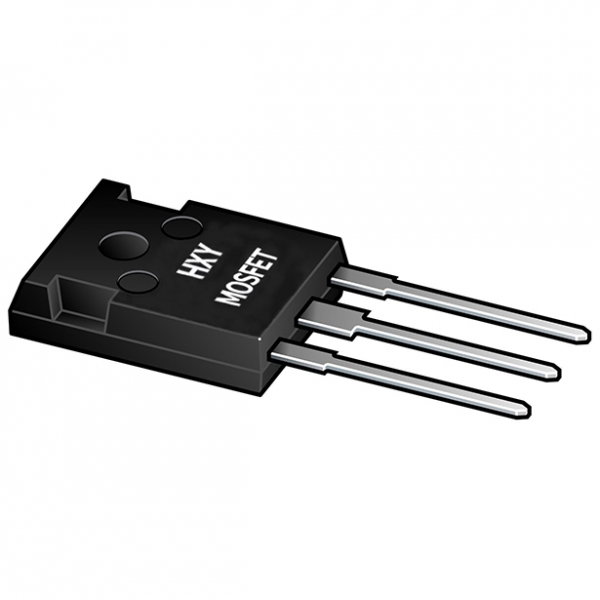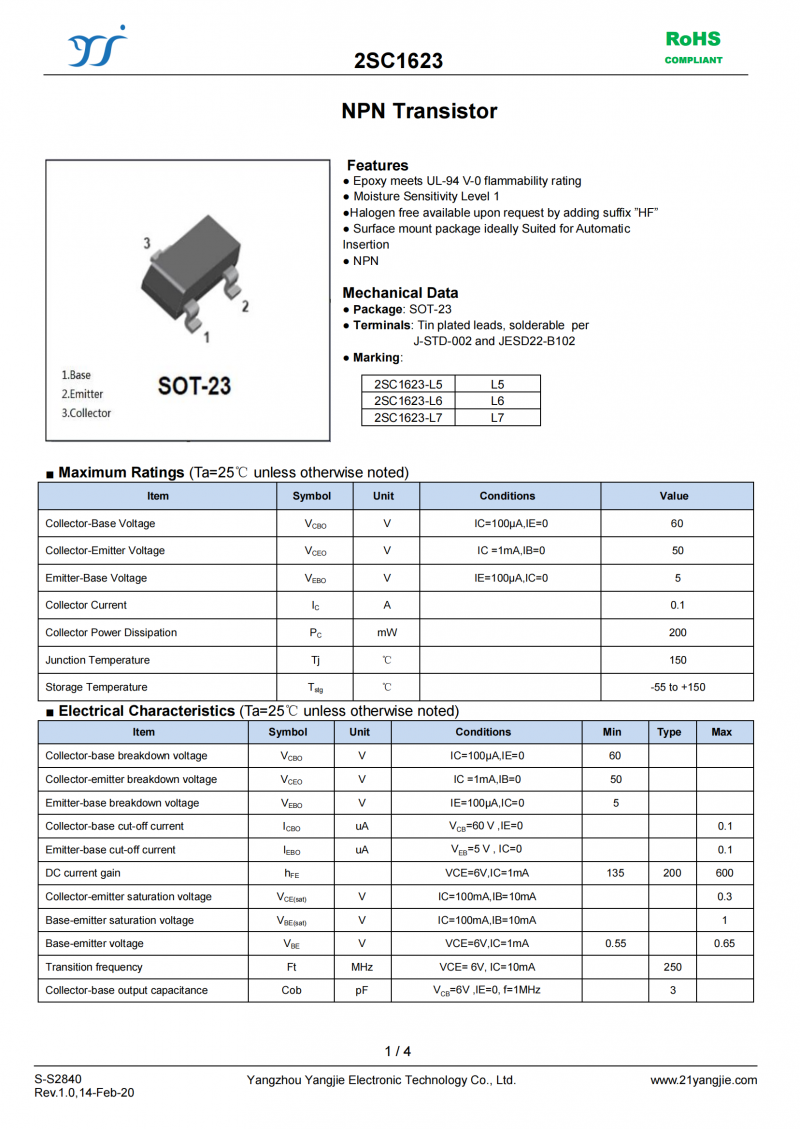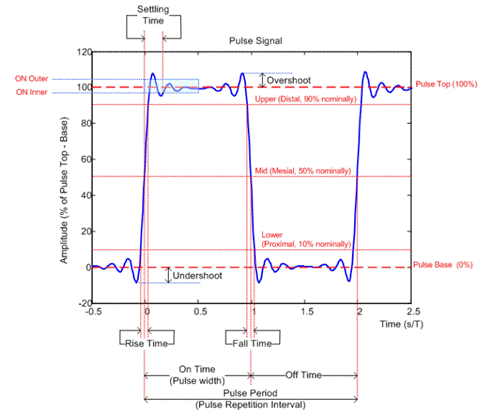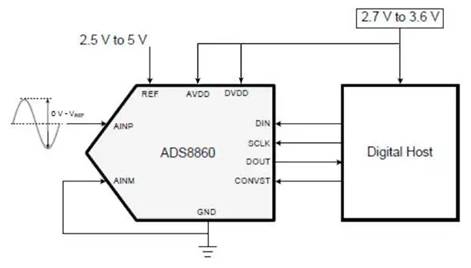文章转自ADI官网,版权归属原作者一切
Electrical ground1 looks simple on a schematic; unfortunately, the actual performance of a circuit is dictated by its printed-circuit-board (PCB) layout. What’s more, ground-node analysis is difficult, especially for dc-to-dc converters, such as buck and boost circuits, which pound the ground node with large, fast-changing currents. When the ground node moves, system performance suffers and the system radiates EMI. But a well-“grounded” understanding of the physics of ground noise can provide an intuitive sense for reducing the problem.
Ground bounce can produce transients with amplitudes of volts; most often changing magnetic flux is the cause. A loop of wire carrying current is essentially an electromagnet whose field strength is proportional to the current. Magnetic flux is proportional to the magnetic field passing through the loop area,
Magnetic Flux ∝ Magnetic Field × Loop Area
or more precisely,
ΦB = BA cosφ
Where the magnetic flux, ΦB, is the magnetic field, B, passing through a surface loop area, A, at an angle, φ, to the area’s unit vector.
A look at Figure 1 gives meaning to the magnetic flux associated with an electric current. A voltage source pushes current through a resistor and around a loop of wire. This current is associated with magnetic flux encircling the wire. To relate the different quantities, think of grabbing the wire with your right hand (applying the right-hand rule). If you point your thumb in the direction of current flow, your fingers will wrap around the wire in the direction of the magnetic field lines. As those field lines pass through the loop, their product is magnetic flux, directed in this case into the page.

Change either the magnetic field strength or the loop area, and the flux will change. As the flux changes, a voltage is induced in the wire, proportional to the rate of change of the flux, dΦB/dt. Notice that either a fixed loop and changing current or a constant current and a changing loop area—or both—will the change the flux.
Suppose, for example, that the switch in Figure 2 is suddenly opened. When current stops flowing, the magnetic flux collapses, which induces a momentarily large voltage everywhere along the wire. If part of the wire is a ground return lead, voltage that is supposed to be at ground will spike, thus producing false signals in any circuitry using it as a ground reference.

Generally, voltage drops in printed-circuit-board sheet resistance are not a major source of ground bounce. 1-oz copper has a resistivity of about 500 µohm/square, so a 1-A change in current produces a bounce of 500 µV/square—a problem only for thin, long, or daisy-chained grounds, or precision electronics.
Charging and discharging of parasitic capacitors provides a path for large transient currents to return to ground. The change in magnetic flux from those changing currents induces ground bounce.
The best way to reduce ground bounce in a switching dc-to-dc converter is to control changes in magnetic flux—by minimizing both current loop areas and changes in loop area.
In some cases, as in Figure 3, the current remains constant, but the switching produces a change of loop area, hence a change of flux. In switch Case 1, an ideal voltage source is connected by ideal wires to an ideal current source. Current flows in a loop that includes a ground return.
In Case 2, when the switch changes position, the same current flows in a different path. The current source is dc and does not change, but loop area does change. The change in loop area means a change in magnetic flux, so voltage is induced. Since a ground return is part of that changing loop, its voltage will bounce.

Buck Converter Ground Bounce
For the purpose of discussion, the simple circuit in Figure 3 is similar to—and can be morphed into—the buck converter in Figure 4.

At high frequencies, a large capacitor—such as the buck input capacitor, CVIN—looks like a dc voltage source. Similarly, the large output buck inductor, LBUCK, looks like a dc current source. These approximations are made to help foster intuition.
Figure 5 displays how magnetic flux changes as the switch alternates between the positions.

The large LBUCK inductor holds the output current roughly constant. Similarly, CVIN maintains a voltage approximately equal to VIN, so the input current is also more or less constant due to the unchanging voltage across the input lead inductance.
Although the input and output currents are roughly constant, as the switch moves from Position 1 to Position 2, the total loop area rapidly changes in the middle portion of the circuit. That change means a rapid change in magnetic flux, which in turn induces ground bounce along the return wire.
Actual buck converters are made with pairs of semiconductor switches, as shown in Figure 6. Although the complexity has increased with each figure, the analysis of ground bounce induced by changing magnetic flux remains simple and intuitive.

The fact that a change in magnetic flux will induce voltage everywhere along a ground return brings up the interesting question: where is true ground? Because ground bounce means a voltage on the ground return trace is bouncing with respect to some ideal point called ground, that point needs to be identified.
In the case of power-regulating circuits, true ground needs to be at the low end of the load. After all, a dc-to-dc converter’s purpose is to deliver quality voltage and current to the load. All other points along the current return are not ground, just part of the ground return.
Since ground is at the low end of the load, and since changing loop area is the cause for ground bounce, Figure 7 shows how careful placement of CVIN reduces ground bounce by reducing the portion of loop area that changes.

Capacitor CVIN bypasses the top of the high-side switch directly to the bottom of the low side switch, thereby shrinking the changing loop area and isolating it from the ground return. From the bottom of VIN to the bottom of the load, no loop-area or switch-current changes occur from one case to the next. Consequently, the ground return does not bounce.

The PCB layout itself actually determines the performance of the circuit. Figure 8 is a PCB layout of the buck schematic in Figure 6. In the switch position shown in Case 1, with the high-side switch on, dc flow follows the outer red loop. In the switch position shown in Case 2, with the low-side switch on, dc flow now follows the blue loop. Notice the changing loop area, and hence, the changing magnetic flux. So, voltage is induced and the ground bounces.
The layout is realized on a single PCB layer for clarity, but using a second layer of solid ground plane would not fix the bounce. Before showing an improved layout, Figure 9 gives a quick example of where a solid ground plane may not be such a good idea.

Here, a 2-layer PCB is constructed so that a bypass capacitor is attached at right angles to a top-layer supply line. In the example on the left, the ground plane is solid and uncut. Top trace current flows through the capacitor, down the via, and out the ground plane.
Because ac always takes the path of least impedance, ground return current rounds the corner on its way back to the source. So the current’s magnetic field and the associated loop area change when either magnitude or frequency of the current changes, hence the changing flux. The tendency of current to flow along the easiest path means that even a solid-sheet ground plane can bounce—irrespective of its conductivity.
In the example on the right, a well-planned cut in the ground plane will constrain the return current to a minimum loop area and greatly reduce the bounce. Any residual bounce voltage that is developed in the cut return line is isolated from the general ground plane.
The PCB layout in Figure 10 uses the principle illustrated in Figure 9 to reduce ground bounce. A 2-layer PCB is designed so that the input capacitor and both switches are built over an island in the ground plane.
This layout is not necessarily the best, but it works well and illustrates a key principle. Notice that the loop area enclosed by the red (Case 1) and blue (Case 2) currents is large. However, the difference between the two loops is small. The small change in loop area means a small change in magnetic flux—and so, a small ground bounce. (In general, however, also keep the loop area small—this figure strives to illustrate the importance of matching ac current paths.)
Additionally, in the ground-return island, where magnetic fields and loop area do change, any ground-return bounce is contained by the cut.
Also of interest, the input capacitor, CVIN, may not at first glance appear to be located between the top of the high-side switch and the bottom of the low-side switch, as discussed in Figure 7, but closer perusal will reveal that it is. Although physical proximity can be good, what really matters is the electrical closeness that is achieved by minimizing the area of the loop.

Boost Converter Ground Bounce
A boost converter is essentially a reflection of a buck converter, so—as seen in Figure 11—it is the output capacitor that must be placed between the top of the high-side switch and the bottom of the low-side switch to minimize the change in loop area.

Review
Ground-bounce voltage is induced principally by a change in magnetic flux. In a dc-to-dc switching power supply, the flux changes because high speed switches direct current between different current-loop areas. But careful placement of the buck/boost input/output capacitor and a surgical cut to a ground plane can isolate bounce. However, it is important to be watchful when cutting a ground plane, to avoid possibly increasing the loop area for some other return current in the circuit.
Also, a good layout locates true ground at the bottom of the load, with no changing loop areas or changing currents. Any other conductively associated point may be called “ground,” but it is just a point along the return path.
Other Useful Concepts for Ground Analysis
If you keep the following basic ideas in mind, you’ll have a good feeling for what will and will not cause ground bounce. Figure 12 shows that conductors that cross at a right angle do not suffer magnetic interaction.

Magnetic field lines around parallel wires carrying equal currents flowing in the same direction cancel everywhere between the wires, so the total stored energy is less than what would be found for the individual wires. For this reason, wide PCB traces have less inductance than narrow traces.

Magnetic field lines around parallel conductors carrying equal currents flowing in opposite directions cancel everywhere outside of the conductors and add everywhere between them. If the inside loop area can be made small, then the total magnetic flux, and therefore the inductance, will also be small. This behavior explains why ac ground plane return current always flows under the top trace conductor.

Figure 15 shows why corners increase inductance. A straight conductor sees its own magnetic field, but at a corner, it also sees the magnetic field from the right-angled conductor. As a result, corners store more magnetic energy, and so, have more inductance than straight lines.

Figure 16 shows that interruptions to the ground plane under conductors carrying current can increase loop area by diverting the return current, thus increasing loop size and facilitating ground bounce.

Component orientation does matter, as shown in Figure 17.

Summary
Ground bounce is always a potential problem. For a monitor or TV, it can mean a noisy picture—for an audio device, background noise. In a digital system, it can lead to computation errors—even a system crash.
A careful estimation of parasitic elements followed by detailed simulation is a rigorous way to predict the magnitude of ground bounce. But to guide circuit-design intuition, it is necessary to understand the physics underlying its origin.
First, design the PCB so that the low end of the load is the true ground point.
Then, simplify the circuit dynamics by replacing large inductors and capacitors with current- and voltage sources. Look for the current loops in each switching combination. Make the loops overlap; where that is impossible, carefully cut out a small island of ground return such that only dc flows into and out of the opening.
In most cases, these efforts will give acceptable ground performance. If they don’t, consider ground-plane resistance, then the displacement currents flowing in parasitic capacitors across all switches and down into the return path.
No matter what the circuit, the basic grounding principles are the same—changing magnetic flux needs to be minimized and/or isolated.
Endnote
- Many articles on the problems of “ground” have been published in Analog Dialogue and are available in our comprehensive online archive. An article co-authored by Paul Brokaw and the present author appears in 23-3 (1989) pp. 7-9. It includes footnote references to earlier related material on grounding and noise. Related material can be found in 11-2 (1977) pp. 10-15; 25-2 (1991) pp. 24-25; 26-2 (1992) p. 27 (includes a good set of references); 30-2 (1996) p. 11 (a bibliography on EMC/EMI/ESD); 39-3 (2005) pp. 3-8. The book of seminar notes, High Speed System Applications, ed. Walt Kester and Hank Zumbahlen, Analog Devices (2006), has an extensive section on PC-board layout and design tools (pp. 4.1-4.90). See also a related earlier article, “Reducing ground bounce in dc/dc-converter applications,” by Jeff Barrow—EDN, 7/6/2006.



